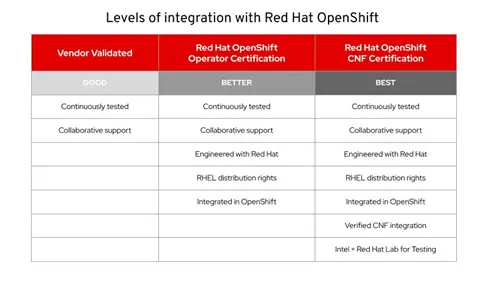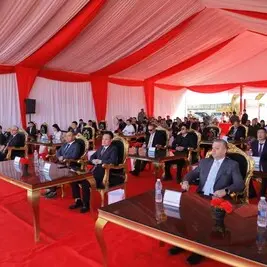PHOTO
Dubai: Red Hat has announced the creation of a cloud-based onboarding service and testbed for network functions with Intel, supporting both virtualized network functions (VNFs) and cloud-native network functions (CNFs). Since making this announcement, the world has changed. Organizations are now weighing each move in a completely different landscape, and searching for additional flexibility and transparency from their partners and supporting ecosystems.
With this in mind, Red Hat collaborated with key service provider customers and partners to jointly define a set of choices for validating and certifying the interoperability of partner CNFs with Red Hat OpenShift. By doing so, partners can decide on their level of investment with Red Hat aligned with the customer value they want to achieve, and telecommunications service providers are assured that they can run CNFs from partners on Red Hat OpenShift with confidence.
Identifying which option is right for you
Red Hat offers CNF partners three options to integrate with Red Hat OpenShift, building upon the trusted foundation of containers and Kubernetes Operators to deliver telco customers value.
These three options include a good, better or best path that enables partners to choose their level of investment based on their business requirements. These three paths have increasing levels of customer value and benefits including interoperability, collaborative support, lifecycle management and ongoing security services, which are key for running products with multiple vendors in the same mission-critical environment.


But what are these three options and which one is right for your organization and your customer?
Vendor validated
The vendor validated level offers interoperability verification of a CNF with Red Hat OpenShift by the application vendor, in collaboration with Red Hat. Further, the vendor commits to offer commercial support for the CNF on Red Hat OpenShift, backed by a collaborative support framework with Red Hat. The partner is required to implement and operate a CI/CD environment and test its CNF with Red Hat OpenShift, as changes in either product are developed and released.
Red Hat OpenShift Operator Certification
Red Hat Openshift Operator Certification delivers deeper integration with Red Hat OpenShift and is engineered with Red Hat, leveraging Red Hat Enterprise Linux (RHEL) as a trusted container foundation. Customers can take advantage of all the benefits of RHEL and the Operator Framework to provide ongoing interoperability, security maintenance and life cycle alignment, as well as automated management of the CNF life cycle.
Certified partner operators can be featured in the Red Hat OpenShift OperatorHub and Red Hat Ecosystem catalog where customers can discover certified operators for Red Hat OpenShift. Certified partner operators are also eligible to be listed in the Red Hat Marketplace. Partners have access to technical and marketing benefits through the Red Hat Connect Partner program.
Red Hat OpenShift CNF certification
Red Hat OpenShift CNF certification sets the highest standard for mission-critical network functions on Red Hat OpenShift. Building on Red Hat Operator Certification, CNF certification extends the collaboration between Red Hat and its partners to apply best practices specific to telco deployments. The partner is required to perform and pass a set of CNF-specific tests in its CI/CD environment or the integration lab offered by Red Hat and Intel, as changes in either product are developed and released.
By engaging with Red Hat, CNF vendors with critical workloads that are virtualized today can prepare their applications for a cloud-native future. This can help customers more quickly achieve the full capabilities of 5G and edge computing.
Certified CNFs will get all the promotional benefits of certified operators, including the eligibility to be listed in the Red Hat Marketplace. In addition, they get assigned a certified CNF badge in the catalog and a corresponding CNF certification logo to use for their own product content.
-Ends-
© Press Release 2020
Disclaimer: The contents of this press release was provided from an external third party provider. This website is not responsible for, and does not control, such external content. This content is provided on an “as is” and “as available” basis and has not been edited in any way. Neither this website nor our affiliates guarantee the accuracy of or endorse the views or opinions expressed in this press release.
The press release is provided for informational purposes only. The content does not provide tax, legal or investment advice or opinion regarding the suitability, value or profitability of any particular security, portfolio or investment strategy. Neither this website nor our affiliates shall be liable for any errors or inaccuracies in the content, or for any actions taken by you in reliance thereon. You expressly agree that your use of the information within this article is at your sole risk.
To the fullest extent permitted by applicable law, this website, its parent company, its subsidiaries, its affiliates and the respective shareholders, directors, officers, employees, agents, advertisers, content providers and licensors will not be liable (jointly or severally) to you for any direct, indirect, consequential, special, incidental, punitive or exemplary damages, including without limitation, lost profits, lost savings and lost revenues, whether in negligence, tort, contract or any other theory of liability, even if the parties have been advised of the possibility or could have foreseen any such damages.



















